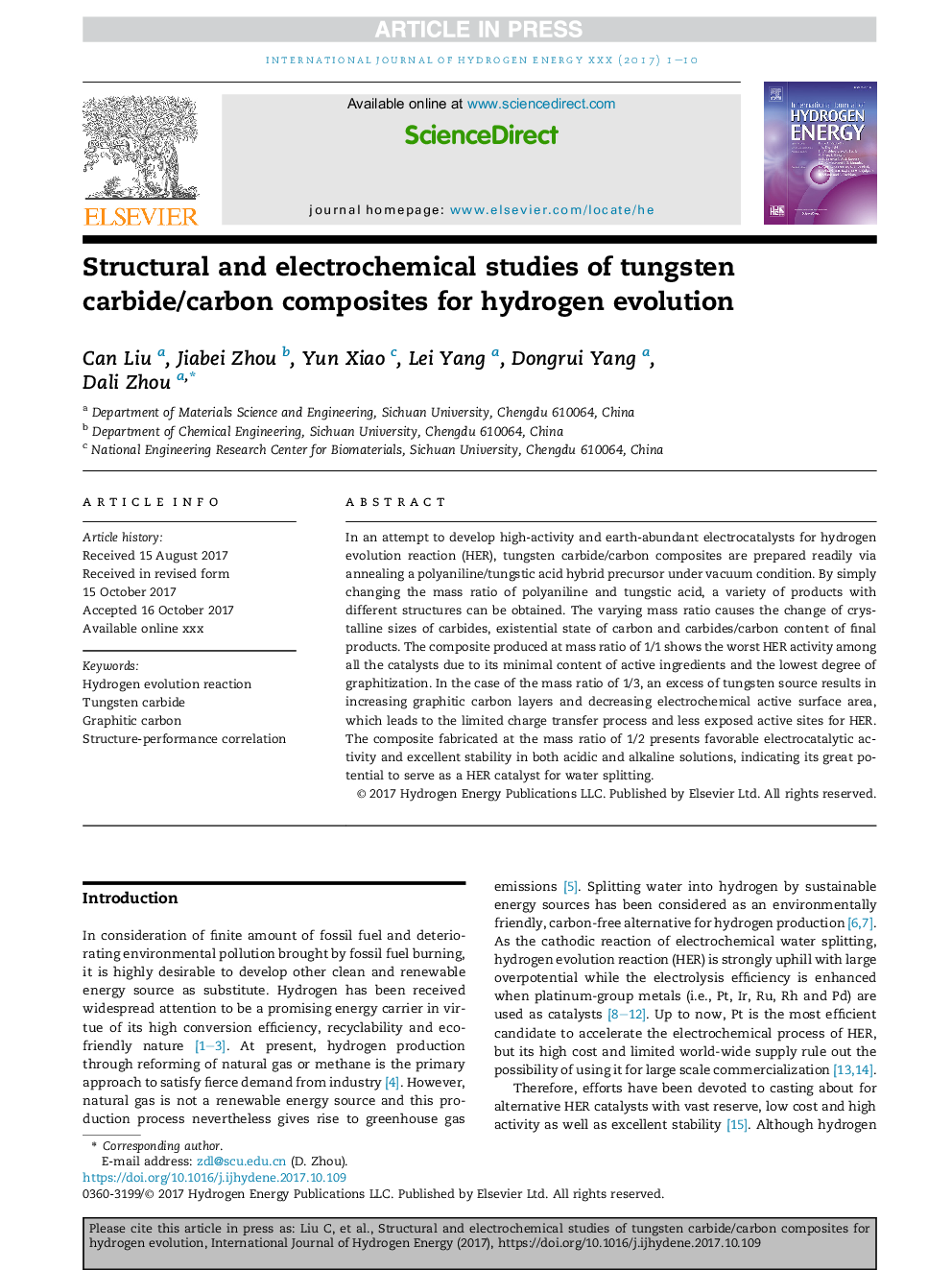| Article ID | Journal | Published Year | Pages | File Type |
|---|---|---|---|---|
| 7709034 | International Journal of Hydrogen Energy | 2017 | 10 Pages |
Abstract
In an attempt to develop high-activity and earth-abundant electrocatalysts for hydrogen evolution reaction (HER), tungsten carbide/carbon composites are prepared readily via annealing a polyaniline/tungstic acid hybrid precursor under vacuum condition. By simply changing the mass ratio of polyaniline and tungstic acid, a variety of products with different structures can be obtained. The varying mass ratio causes the change of crystalline sizes of carbides, existential state of carbon and carbides/carbon content of final products. The composite produced at mass ratio of 1/1 shows the worst HER activity among all the catalysts due to its minimal content of active ingredients and the lowest degree of graphitization. In the case of the mass ratio of 1/3, an excess of tungsten source results in increasing graphitic carbon layers and decreasing electrochemical active surface area, which leads to the limited charge transfer process and less exposed active sites for HER. The composite fabricated at the mass ratio of 1/2 presents favorable electrocatalytic activity and excellent stability in both acidic and alkaline solutions, indicating its great potential to serve as a HER catalyst for water splitting.
Related Topics
Physical Sciences and Engineering
Chemistry
Electrochemistry
Authors
Can Liu, Jiabei Zhou, Yun Xiao, Lei Yang, Dongrui Yang, Dali Zhou,
